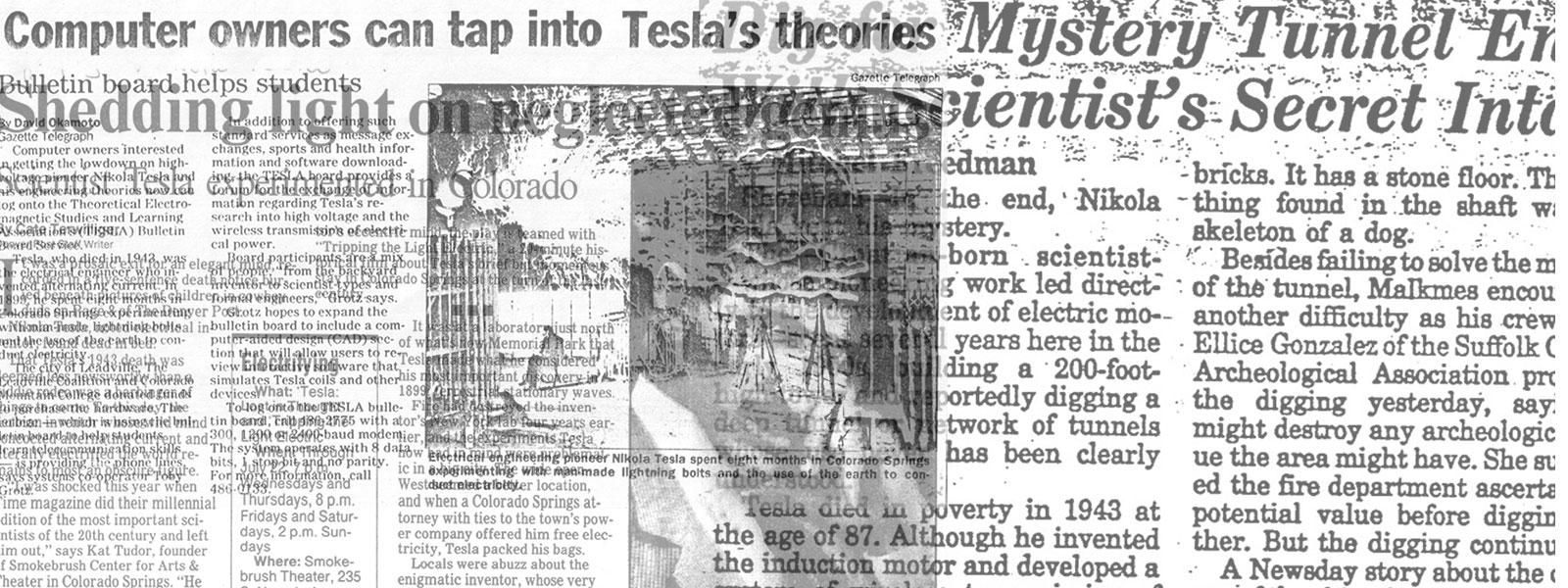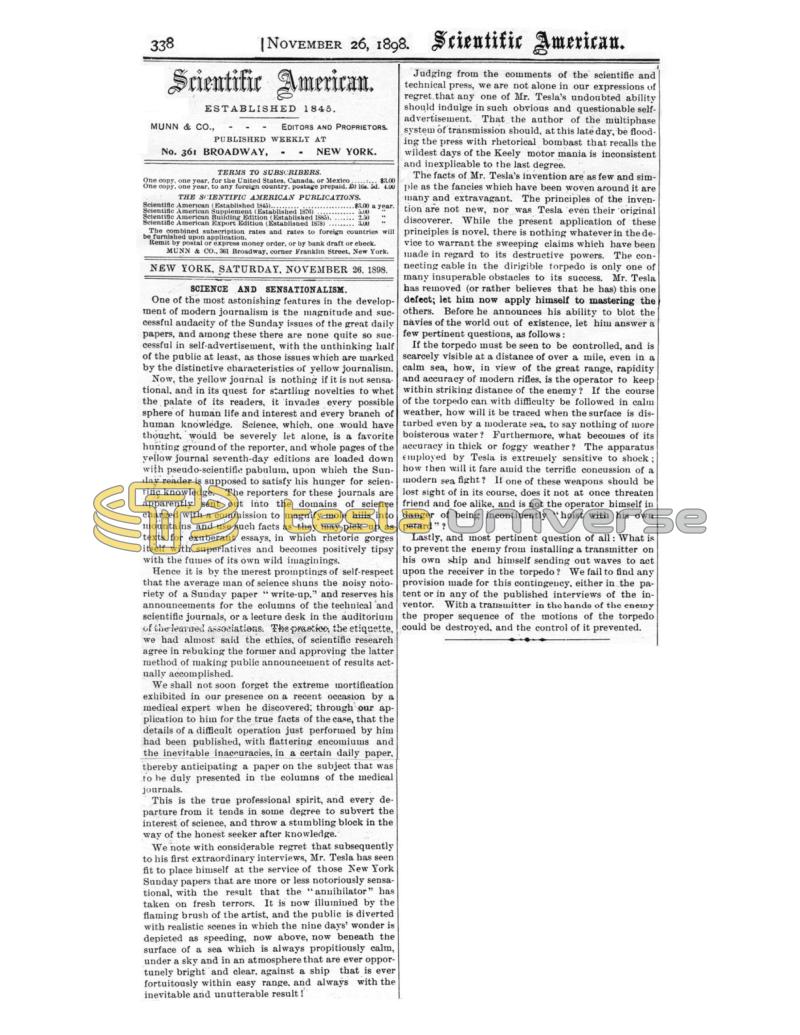
Nikola Tesla Articles
Science and Sensationalism - Arguments Against Tesla's Wireless Torpedo
One of the most astonishing features in the development of modern journalism is the magnitude and successful audacity of the Sunday issues of the great daily papers, and among these there are none quite so successful in self-advertisement, with the unthinking half of the public at least, as those issues which are marked by the distinctive characteristics of yellow journalism.
Now, the yellow journal is nothing if it is not sensational, and in its quest for startling novelties to whet the palate of its readers, it invades every possible sphere of human life and interest and every branch of human knowledge. Science, which, one would have thought, would be severely let alone, is a favorite hunting ground of the reporter, and whole pages of the yellow journal seventh-day editions are loaded down with pseudo-scientific pabulum, upon which the Sunday reader is supposed to satisfy his hunger for scientific knowledge. The reporters for these journals are apparently sent out into the domains of science charged with a commission to magnify mole hills into mountains and use such facts as they may pick up as texts for exuberant essays, in which rhetoric gorges itself with superlatives and becomes positively tipsy with the fumes of its own wild imaginings.
Hence it is by the merest promptings of self-respect that the average man of science shuns the noisy notoriety of a Sunday paper “write-up,” and reserves his announcements for the columns of the technical and scientific journals, or a lecture desk in the auditorium of the learned associations. The practice, the etiquette, we had almost said the ethics, of scientific research agree in rebuking the former and approving the latter method of making public announcement of results actually accomplished.
We shall not soon forget the extreme mortification exhibited in our presence on a recent occasion by a medical expert when he discovered; through our application to him for the true facts of the case, that the details of a difficult operation just performed by him had been published, with flattering encomiums and the inevitable inaccuracies, in a certain daily paper, thereby anticipating a paper on the subject that was to be duly presented in the columns of the medical journals.
This is the true professional spirit, and every departure from it tends in some degree to subvert the interest of science, and throw a stumbling block in the way of the honest seeker after knowledge.
We note with considerable regret that subsequently to his first extraordinary interviews, Mr. Tesla has seen fit to place himself at the service of those New York Sunday papers that are more or less notoriously sensational, with the result that the “annihilator” has taken on fresh terrors. It is now illumined by the flaming brush of the artist, and the public is diverted with realistic scenes in which the nine days’ wonder is depicted as speeding, now above, now beneath the surface of a sea which is always propitiously calm, under a sky and in an atmosphere that are ever opportunely bright and clear, against a ship that is ever fortuitously within easy range, and always with the inevitable and unutterable result!
Judging from the comments of the scientific and technical press, we are not alone in our expressions of regret that any one of Mr. Tesla’s undoubted ability should indulge in such obvious and questionable self-advertisement. That the author of the multiphase system of transmission should, at this late day, be flooding the press with rhetorical bombast that recalls the wildest days of the Keely motor mania is inconsistent and inexplicable to the last degree.
The facts of Mr. Tesla’s invention are as few and simple as the fancies which have been woven around it are many and extravagant. The principles of the invention are not new, nor was Tesla even their original discoverer. While the present application of these principles is novel, there is nothing whatever in the device to warrant the sweeping claims which have been made in regard to its destructive powers. The connecting cable in the dirigible torpedo is only one of many insuperable obstacles to its success. Mr. Tesla has removed (or rather believes that he has) this one defect; let him now apply himself to mastering the others. Before he announces his ability to blot the navies of the world out of existence, let him answer a few pertinent questions, as follows:
If the torpedo must be seen to be controlled, and is scarcely visible at a distance of over a mile, even in a calm sea, how, in view of the great range, rapidity and accuracy of modern rifles, is the operator to keep within striking distance of the enemy ? If the course of the torpedo can with difficulty be followed in calm weather, how will it be traced when the surface is disturbed even by a moderate sea, to say nothing of more boisterous water? Furthermore, what becomes of its accuracy in thick or foggy weather? The apparatus employed by Tesla is extremely sensitive to shock; how then will it fare amid the terrific concussion of a modern sea fight? If one of these weapons should be lost sight of in its course, does it not at once threaten friend and foe alike, and is not the operator himself in danger of being incontinently “hoist with his own petard”?
Lastly, and most pertinent question of all: What is to prevent the enemy from installing a transmitter on his own ship and himself sending out waves to act upon the receiver in the torpedo ? We fail to find any provision made for this contingency, either in the patent or in any of the published interviews of the inventor. With a transmitter in the hands of the enemy the proper sequence of the motions of the torpedo could be destroyed, and the control of it prevented.
